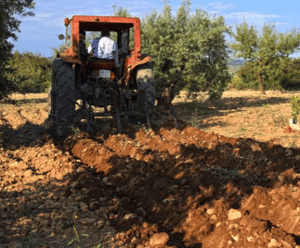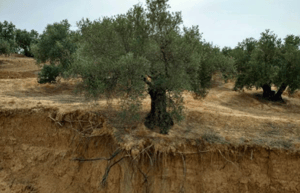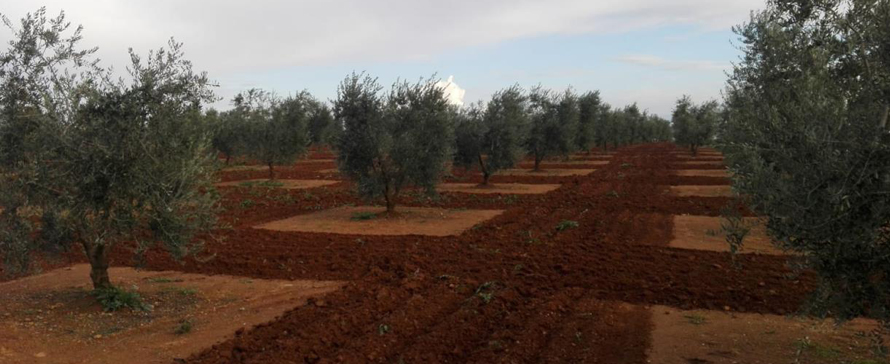Listen to this article
This is the oldest technique of all. Tilling is done several times a year, which totally eliminates weeds. Tilling is more or less deep, depending on the time of year, to improve infiltration and diminish evaporation from the soil. Tilled land is actually a kind of cover, because there are no active roots in it and it insulates the layer underneath where the roots are.
Total tilling
Advantages:
- Herbicides are not used in this system so it is compatible with ecological agriculture. Herbicide-resistant weeds do not appear in this system.
- This system makes it easier for the olive tree to withstand the summer because of the water accumulated in the soil from winter and spring rains.
Disadvantages:
- The root system of olive trees tends to be radial and shallow. With this system, the most superficial roots are systematically cut off, which does somewhat disturb production.
- The tilled layer insulates the underlayer where the roots are. If the rain is light, it may not soak through the tilled layer and the olive tree will not receive the water.
This system makes normal activities in the grove, such as moving machinery around, very difficult.
Only the very soluble nutrients applied as fertilizers (above all nitric nitrogen) are easily absorbed by the roots, while the ones that attach to the colloids remain in the tilled soil that has no roots.
Tilling can be done at different depths depending on if it is done close to or farther away from the trunk. Tilling can be done less between fall and the beginning of spring, to allow for plant coverage to develop in winter, which improves infiltration and helps support the organic matter when tilling starts up again in the spring.

In the grove, the area under the crown of the tree is left untilled, while the rest is cleaned of weeds through herbicides, physical removal or pasture.
Partial tilling
Advantages:
- In the square around the olive tree, there are superficial roots that can take advantage of light rains, and any fertilizer used.
- The tilled rows will better retain winter and spring rainwater for summertime. This system works well in flat olive fields with low average rainfall.
- When combined with physical removal, this system can be used in organic farming.
Disadvantages:
- Tilling makes it difficult for machinery and/or people to go through the field especially in rainy seasons.
- In fields that are treated with herbicids, herbicide-resistent weeds can appear.
- If the area under the crown is weeded with a mechanical weeder, it never gets all the weeds so there will still be some competition for the trees.
This is currently the most typical soil system used in Spanish olive groves, mostly in areas with good rainfall or in fields with irrigation.
Plant coverage greatly improves infiltration and reduces runoff and erosion, as well as providing a constant supply of organic matter for the soil.
If the plant coverage is not duly controlled, it becomes a serious competitor with the olive tree.
In Spain there was a rapid shift from total tilling to no tilling with bare ground. In the majority of farms, the fact that the roots colonized the horizontal surface brought about large increases in production and a significant reduction in costs for fuel and machinery.
However, most of the soil was compacted down by the machinery passing through and loss of organic matter, and so infiltration was drastically reduced, and there was less water available for the trees. In addition, runoff increases and with that comes laminar erosion, which produces severe and permanent loss of soil:

In this type of soil management, all the water and mineral resources of the soil are entirely available to the olive tree because there is no competition from weeds.
And it continues to be a good soil management system for soils that do not have infiltration or erosion problems, and that are shallow, in sub-humid to humid climates.
It is an inexpensive system, but very often in the medium and long term, herbicide-resistant weeds develop and it becomes expensive to keep them under control.
.png)




